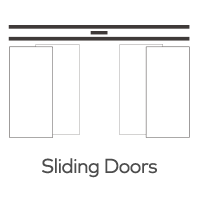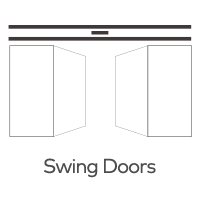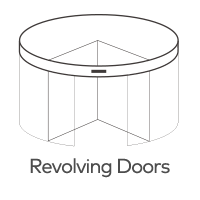Do Automatic Door Sensors Interfere with Pacemakers?
Automatic doors are everywhere — in hospitals, malls, airports, and offices — quietly making entryways more accessible and efficient. These systems rely on sensors to detect motion or presence and trigger door movement. However, for individuals with pacemakers or implantable cardioverter-defibrillators (ICDs), concerns sometimes arise about whether the electromagnetic signals emitted by these sensors could cause interference.
The good news is that modern automatic door sensors are generally safe for people with pacemakers, but there are a few important points to understand about how these technologies interact.
Understanding How Automatic Door Sensors Work
Automatic door sensors detect when someone approaches and then signal the door mechanism to open. The most common sensor types include:
- Microwave or radar sensors – These emit low-power electromagnetic waves (typically around 10.5 GHz) that reflect off moving objects to detect motion.
- Infrared (IR) sensors – Use invisible light beams to sense movement or presence.
- Ultrasonic sensors – Emit sound waves at high frequencies to detect objects by their reflections.
- Combined microwave and infrared sensors – Offer more reliable detection by using both technologies together.
All of these operate at very low power levels, much weaker than mobile phones, Wi-Fi routers, or security scanners.
How Pacemakers Work
A pacemaker is a small medical device implanted in the chest to help regulate a person’s heart rhythm. It uses electrical impulses to keep the heart beating at a steady pace.
Because pacemakers rely on electrical signals, they can sometimes be affected by strong electromagnetic interference (EMI) from nearby devices. In rare cases, very strong EMI can cause the pacemaker to misinterpret external signals as heartbeats or to temporarily pause pacing.
However, pacemakers are designed to meet strict international safety standards (such as ISO 14117 and IEC 60601-1-2) that ensure immunity to most common electromagnetic sources found in daily environments — including automatic doors.
Do Automatic Door Sensors Cause Interference?
In normal circumstances, automatic door sensors do not interfere with pacemakers. Here’s why:
- The electromagnetic fields from microwave sensors are extremely low power and non-ionizing — they are far below the threshold that could affect medical devices.
- The energy emitted dissipates quickly; beyond a few inches from the sensor antenna, the signal strength drops dramatically.
- Most sensors are mounted several feet above head level, far from the chest area where pacemakers are located.
- Medical device manufacturers specifically test pacemakers for resistance to common electromagnetic fields, including those produced by automatic doors.
Extensive field data from hospitals, clinics, and public buildings (where both automatic doors and pacemaker users are common) show no credible evidence of interference incidents.
Situations That Might Require Extra Caution
Although interference is highly unlikely, a few scenarios may call for attention:
- Standing extremely close to a sensor housing (within a few centimeters) for an extended period — though still unlikely to cause harm, this can be avoided as a precaution.
- Older pacemaker models (manufactured before modern EMI shielding standards) could, in rare cases, be more susceptible.
- Improperly shielded or damaged sensors might emit stronger signals than intended, but such conditions would also violate electrical safety codes.
If someone with a pacemaker experiences unusual sensations near any electronic equipment — including doors, security gates, or machinery — they should simply step away and consult a healthcare provider.
Recommendations for Pacemaker Users
- Stay a normal distance from the door sensor (you don’t need to avoid walking through it).
- Avoid leaning directly against the sensor housing or standing still underneath it for long periods.
- Report any unusual symptoms to your cardiologist or device manufacturer.
- Inform building safety or maintenance staff if you suspect any equipment malfunction.
These are general good practices for all types of electronic environments, not because automatic doors pose a known risk, but as a part of cautious living with a medical device.
Summary
Automatic door sensors do not interfere with pacemakers when properly installed and functioning. The low-energy electromagnetic signals used for motion detection are well within the safety limits established by international standards. Millions of people with pacemakers pass through automatic doors every day — including in hospitals — without any issues.
If you or someone you know has a pacemaker, you can confidently continue to use automatic doors in public and private spaces. They remain one of the safest and most convenient technologies in modern building design.







